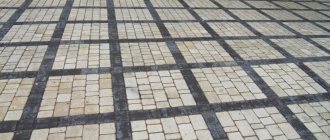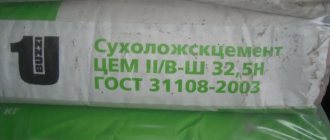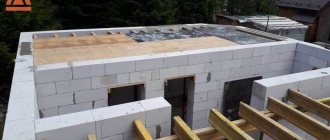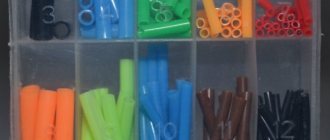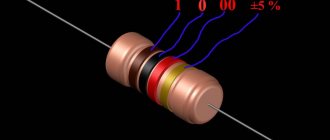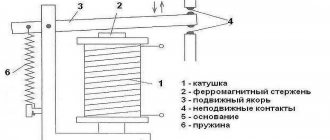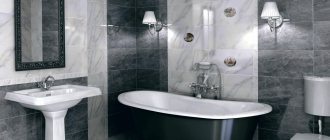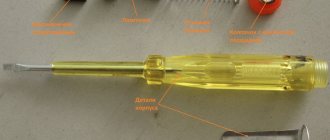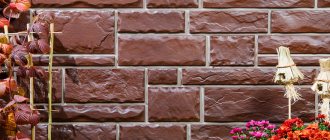Concrete, which has increased strength, is widely used in the construction industry. The material can withstand significant loads, but is susceptible to moisture. The cellular structure of the concrete mass promotes the penetration of moisture through the pores, which causes gradual destruction of concrete structures, reducing their reliability and service life. A special impregnation for concrete against water allows you to increase the moisture resistance of the material. Let us dwell in detail on the properties, types and technology of applying hydrophobic additives.
What is hydrophobic concrete
Moisture-resistant concrete is a special type of building material with sealed pores and capillary channels. The absence of cavities that allow moisture to penetrate deep into the mass increases the moisture resistance of concrete. In the vocabulary of professional builders, a material treated with special impregnations (hydrophobizers) is called hydrophobic.
Concrete (even non-porous structure) always has a small number of microscopic pores and cracks
It is characterized by:
- increased specific gravity;
- increased resistance to surface moisture;
- resistance to penetration of groundwater and precipitation deep into the massif.
According to the requirements of the state standard, various types of concrete are divided into classes based on their ability to resist moisture penetration. The regulatory document provides for the classification of concrete by an alphanumeric index, including the capital Latin letter W and an even number from two to twenty. The digital indicator characterizes the pressure of the water column that the concrete mass is capable of absorbing.
What does hydrophobic concrete look like?
As the digital value increases, the hydrophobic properties increase, which affects the cost of the material. The water resistance of concrete determines the area of use of the material:
- In private housing construction, building materials marked W4, W6 are used. The most popular concrete is marked W6. It is used when constructing houses, baths, saunas and swimming pools;
- material with moisture resistance level W8 has high water permeability, but requires additional waterproofing protection. It is widely used in concreting foundations;
- the close location of aquifers requires the use of compositions with an increased level of moisture resistance W10–W12. They are also used for facade plastering of building walls;
- Concrete solutions of grades W14–W20 are the most expensive. They are characterized by increased water resistance and are used for the construction of hydraulic engineering facilities.
The customer’s financial capabilities do not always allow them to purchase expensive concrete with increased moisture resistance. Using a water repellent for concrete, it is easy to increase the performance properties of a material whose outer layer is waterproof. Anyone can make waterproof concrete with their own hands.
How and why water-repellent additives are introduced into concrete
Hydrophobic additives increase the moisture-repellent properties of the concrete mass. They are introduced into the concrete composition using various methods:
- are added at the solution preparation stage. As a result of the interaction of modifiers with the remaining components of the mixture and their uniform distribution in the solution, concrete acquires the required level of moisture resistance;
- applied to a hardened concrete surface. Strengthening impregnation for concrete penetrates through capillaries into the mass, increasing its density. The material acquires increased resistance to moisture, as well as improved waterproofing properties.
Water-repellent impregnation for concrete can significantly increase its protection from water.
Hydrophobizing additives for concrete GKZh and other brands of modifiers are designed to solve the following problems:
- increasing the moisture resistance of the concrete mass;
- increasing strength characteristics;
- improving thermal insulation properties.
Changing the performance properties of concrete is achieved through strengthening and waterproofing with impregnating compounds.
The need to use impregnations for concrete
The presence of micropores causes two main disadvantages of this material:
- low hydrophobicity. Moisture seeps through the pores;
- insufficient concrete density, which reduces the strength of the finished floor.
Modern technologies make it possible to transform the porous structure of concrete and turn it into waterproof stone, which is especially important when creating concrete surfaces in contact with moisture.
The following problems are solved with the help of concrete impregnations:
Kawabanga! What paint to paint a concrete floor
Water-repellent impregnation for concrete – advantages of use
Impregnation for concrete, intended for surface treatment, has a set of serious advantages:
- gives concrete water-repellent properties;
- prevents corrosion destruction of reinforcement;
- allows you to save on primers and coatings;
- prevents the release of salts to the surface and the formation of stains;
- increases the resistance of concrete to negative temperatures;
- prevents surface contamination and does not allow drawing;
- improves the thermal insulation characteristics of the concrete mass;
- does not collapse under the influence of temperature fluctuations and intense precipitation;
- helps to increase strength properties;
- complicates the development of microorganisms, preventing the development of fungus and mold;
- increases the service life of treated reinforced concrete structures;
- does not lose its protective properties when exposed to ultraviolet rays;
- maintains vapor and air permeability.
Hydrophobic additives for concrete are mixed with other ingredients at the stage of preparing the concrete mixture and are included in the structure, ensuring water resistance.
Increased performance characteristics and features of the use of the impregnating composition make it indispensable for achieving the required properties of concrete. Professional builders claim that concrete impregnation is a reliable and proven product. Due to the undeniable advantages and ease of processing concrete, impregnation is popular among novice craftsmen and professionals.
Rating of the best water repellents. Top 5
Below is a list of the most popular drugs.
Aquasil
The product is especially effective for porous and heavy grades of concrete and brick. The use of Aquasil reduces the moisture absorption of these building materials by up to 30 times. In addition, treating monolithic concrete with this composition can increase its strength by more than 25%. The low content of alkaline elements ensures high fire-fighting properties and a long service life: re-treatment may be required no earlier than after 10 years.
The drug is available in the form of a concentrate, which is diluted in a ratio of 1:10 immediately before use. The average consumption of the finished mixture ranges from 220 to 500 ml/m2, depending on the absorbency of the material. Another advantage of Aquasil is its versatility; it can be used both for volumetric hydrophobization (at the preparation stage, an Aquasil solution is introduced into concrete in a ratio of 0.4 - 0.5% of the mass fraction of cement) and for surface treatment. When applied superficially, moisture absorption is noticeably reduced within 2 hours after treatment.
Most often, Aquasil can be found in 5 liter canisters; the average cost of the drug in the Russian Federation is 1800 – 1900 rubles.
Customer reviews indicate high efficiency and popularity among both professional builders and private developers; below are some of them.
Kirill, Moscow
We recently built a small country house. Walking through a holiday village, I often noticed terrible white stains on the facing brickwork, which greatly spoiled the appearance of even skillfully executed masonry. In order to avoid such troubles myself, I decided to consult with specialists. Builder friends recommended treating the walls with Aquasil. For more than two years, no salt formations have appeared.
Andrey Sergeevich, Stavropol
Having read on the Internet about the possibility of volumetric hydrophobization of concrete in domestic conditions, when pouring the foundation, I decided to add a little Aquasil to the solution. In addition, after complete hardening, the entire base surface was treated with a roller. We have not yet carried out any facing work and the base remains completely unprotected from external influences. Despite this, the basement has a fairly healthy microclimate, and on the surface of the concrete, after rain, you can often notice droplets of moisture.
Spectrum 123
This water repellent not only prevents the absorption of moisture, but also reliably protects reinforcement and other metal inlays of reinforced concrete structures from corrosion. In addition, the product has pronounced antiseptic properties, which helps to avoid the appearance of mold and fungal colonies on the treated surface. The drug begins to actively counteract moisture absorption 18–20 hours after application.
"Spectrum 123" is available in the form of a concentrate. To prepare a working consistency, dilute with water in a ratio of 1:4. If the surface to be treated is highly porous, the concentrate can be diluted in a ratio of 1:3. The finished solution penetrates into the structure of the material to a depth of 12 mm, and the flow rate can range from 0.2 to 0.4 l/m2. It is recommended to carry out processing at a temperature of at least +50C, and the surface must be dry and free of dust and dirt.
Standard packaging of Spectr 123 impregnation is a 5 liter canister. The average cost can range from 1600 to 1700 rubles.
Most reviews about this brand of water repellent are positive, here are some of them.
Dmitry, 47 years old
I read a lot about the benefits of hydrophobization, the ease of application of the composition and the amazing results of the treatment and finally decided to try it. I bought a con. The facade is made of facing bricks, so I decided to dilute it 1:4. I applied the drug myself using a spray bottle. It’s too early to judge frost resistance and other characteristics, but there are no salt deposits like on the neighbor’s house yet.
Vladimir, Kursk
A neighbor advised me to use a hydrovobizer when he noticed that salt deposits began to appear on my house. He himself used Spectrum 123 and I decided not to experiment, especially since, having carefully examined his house, I did not find any signs of white stains. I bought the drug, diluted it according to the instructions, and for two years no new white stains appeared, in addition, it seemed to me that in winter it became a little warmer.
Tiprom-U
The drug is widely used for surface hydrophobization of building materials with high porosity, and is produced in the form of an organosilicon concentrate. The mixture has dirt-repellent properties and prevents the appearance of so-called “efflorescence” on the surface of the brickwork. Despite all the advantages of Tiprom-U, it is not recommended to use it for treating ceramic and tiled surfaces that are in constant contact with water.
The depth of penetration into the thickness of the material reaches 30 – 35 mm, which ensures reliable hydrophobization of porous materials. In addition, paving slabs treated with Tiprom-U are less susceptible to ice formation.
The drug should be applied in several layers at intervals of no more than 10 minutes until absorption stops completely. To treat 1 m2, you may need from 150 to 300 ml, depending on the absorbency of the material. "Tiprom-U" is produced in original canisters with a capacity of 5 liters, the average cost of one canister ranges from 1800 to 1850 rubles.
Below you can read reviews from customers who have already used Tiprom-U and assessed its advantages and disadvantages in practice.
Oleg, Ekaterinburg
As you know, learning from your mistakes is expensive and painful, so after seeing how quickly paving slabs can deteriorate under the influence of moisture and frost, I decided to take appropriate measures in advance. The blind area of the basement of our house is lined with paving slabs. After analyzing the information available on the Internet and comparing it with my material capabilities, I decided to use Tiprom-U for hydrophobization. The result exceeded all my expectations: firstly, the formation of frost noticeably decreased, and secondly, with the onset of spring, only two tiles were discovered that required replacement.
Alexander, 38 years old, Novorossiysk
"Tiprom-U" was used to process the facade made of red facing bricks. After five years, I have not found any signs of surface damage. In addition, no whitish streaks appeared. I think that the drug completely coped with its task, I recommend everyone to use “Tiprom-U” for waterproofing facing bricks.
Crystallisol
This brand produces a wide range of products designed to process a specific material, taking into account its characteristics and performance characteristics. This approach makes it possible to achieve optimal hydrophobization parameters for each individual material.
Volumetric hydrophobization of concrete mixtures at the preparation stage is carried out by adding the drug “Kristallizol Monolith”. This technology can significantly increase the moisture resistance of concrete and does not cause chemical reactions with antifreezes and plasticizers. Treatment with Crystallisol W12 can achieve a significant increase in the frost resistance and moisture resistance of concrete structures.
For surface treatment, water-based water repellents are used, forming a waterproof film on the concrete surface, the vapor permeability of which does not prevent the walls from “breathing.” In addition, all types of Kristallizol water repellents have pronounced antiseptic properties and a high degree of fire safety. The drug is produced in special buckets with a capacity of 15 kg, the average cost of one bucket is 4 – 4.2 thousand rubles.
There are relatively few reviews about this composition. This is due to the fact that volumetric hydrophobization of concrete and reinforced concrete structures is mainly carried out by large construction companies, and yet there are still some reviews.
Roman, Smolensk
When pouring the strip foundation of a country house, I decided to add Kristallizol “Monolith” to the concrete. As I read on the Internet, this procedure is cleverly called volumetric hydrophobization of concrete. After pouring and complete hardening, I treated the base surface with the same crystallizol, only W12. It’s been three years since the house was built and I have no complaints about the foundation; in the spring I’m going to treat the blind area in the same way.
Victor, Moscow region.
I read on the Internet about the hydrophobization of brickwork, that with the help of special impregnations it is possible to prevent premature peeling of bricks and the appearance of a disgusting whitish coating on the walls. After thinking a little, I decided that my home could use such a procedure. From a financial point of view, I was quite satisfied with Kristollizol, modifications of W12. For five years now the brick has been as good as new and no stains have been observed.
Armocryl-A
A special feature of this material is its polyacrylate base. The drug has the ability to penetrate deeply into the structure of the material being processed, which provides reliable protection from moisture not only to the surface of the material, but also to its internal structure. In addition, the resulting film effectively protects pigmented materials from exposure to ultraviolet radiation.
The application of reinforced concrete allows strengthening the seams of brickwork, and also increases the strength of concrete and reinforced concrete structures. The drug is applied in two layers with an interval of 10 - 12 hours. Depending on the texture and porosity of the surface, the consumption of water repellent can be from 200 to 280 ml/m2. In addition, Armocryl-A has increased resistance to aggressive chemical compounds.
The standard packaging for Armocryl-A is a metal bucket with a capacity of 15 liters. The average cost of the drug ranges from 4.9 to 5.3 thousand rubles/15 liters.
The use of Armocryl-A is especially common in the private sector, as evidenced by numerous positive reviews.
Vitaly, Rostov region.
At the dacha I used Armocryl-A to hydrophobize paths made of colored paving slabs. I was very pleased with the result: when the snow melted, the color of the tiles practically did not change, not to mention their complete preservation. In addition, it turned out to be much easier to clear ice from the treated surface, try it - you won’t regret it!
Yaroslav, Kursk region.
I can say with confidence that a façade treated with reinforced acrylic is less susceptible to freezing and fades slightly even in direct sunlight; I was convinced of this from my own experience. In addition, not a single brick was covered with a white salt coating, as stated by the manufacturer. In my opinion, it is a very high-quality and reliable water repellent, I recommend it to everyone.
Hydrophobic compositions for concrete - types of impregnations
Hydrophobizing additives offered in specialized stores are divided into two groups. Their representatives:
- hydrophobic composition for water-based concrete. The water-based additive has its positive aspects. It ensures the presentation of concrete, is resistant to moisture, ultraviolet rays, and allows the mass to pass steam;
- hydrophobic impregnation for concrete based on silicone. It is in demand by professional builders due to its unique characteristics. The silicone included in the composition helps ensure the strength characteristics of the coating, reliably prevents the penetration of moisture, and does not create obstacles to air exchange.
The principle of their protective effect is based on the formation of a crystalline structure that prevents the penetration of moisture.
Regardless of what surface protection of concrete from moisture is used, the methods of its use remain the same - the additive is applied to the surface of the concrete. Each type of hydrophobic additive has a different area of use. When purchasing a water repellent, read the manufacturer's recommendations. The scope of application and the average cost of impregnating mastic are interrelated.
Purpose and principle of operation
Unprotected concrete absorbs moisture like a sponge; inside this water freezes, thaws - and so on in a circle. Before you have time to blink your eye, harmless microcracks will become not-so-micro. Therefore, the foundation, walls, paths, blind areas, in general, everything that is built on the street (not to mention what is in contact with water - gutters, wells) must be somehow additionally treated so that water does not seep into the pores.
Previously, they used waterproofing for this - they coated the walls with bitumen mastic and covered them with waterproof materials. The problem is that such protection does not let not only moisture, but also air into the room. Without good ventilation, you will simply suffocate there. You will have to ventilate often, even in winter. Therefore, waterproofing is now used only for roofs and basements. (Plus, if this layer cracks, moisture still gets inside, and good conditions are created for the growth of bacteria and fungi.)
Helpful information:
- Concrete M250 (b20, b20, b20): application, composition and...
- How to make 3D floors with your own hands
- How to make a ceiling from plastic panels
- How to make decorative plaster for concrete
- Laying paving slabs on concrete
- Concrete grade M300 - characteristics
Good news: there are now many water repellents for concrete. What are they and how are they better than waterproofing?
- Water repellents do not cover the surface from above, but penetrate deep into the very structure of the material. Even surface impregnations penetrate 2-15 mm, the resulting protective film is very elastic and difficult to damage.
- The active substances included in water repellents clog only large pores. Water will not be able to get into small capillary pores due to surface tension. But both steam and air can easily pass there. The material “breathes” and mold does not grow on it.
Thus, water repellents reduce surface wettability. Just as concrete differs by grade of strength, it is also divided by grade of hydrophobicity: W20 is the most waterproof, W1 is the least. Additives and impregnations increase this indicator by at least two grades.
The normal indicator for private construction is W4-W8 (2-4 grades higher if the groundwater is shallow).
Water repellents are resistant to direct sunlight. This also allows you to freely use them outdoors.
It follows that these products give concrete several more important properties:
- frost resistance;
- environmental friendliness;
- protection against efflorescence (concrete is destroyed not only by the water itself, but also by the salts dissolved in it);
- the same façade (or better).
How to drill a hole in concrete
Some waterproofing additives in the solution increase its density and reduce water transmission simply due to the fact that there are fewer pores in the concrete. In the so-called hydrophobic concrete, the compressive strength also increases by thirty percent.
In general, due to the use of water repellents:
- The service life of concrete structures is extended.
- No extra money or time is wasted on repairs.
- Absorbency is reduced, which means less primer (varnish, paint) is wasted - you can save on consumable finishing materials.
How concrete additives work to make waterproof
Regardless of the brand of impregnating compositions, water-repellent impregnation for concrete acts after application to the concrete surface as follows:
- the additive is absorbed into the concrete mass through capillary channels;
- formation of a crystal lattice occurs at the molecular level;
- a lattice structure is formed that does not impede the free passage of air.
It penetrates into the material to a certain depth and creates a barrier to the penetration of water.
The concrete mass after treatment retains the ability to transmit steam. When assessing the effect of using the supplement, the following points must be taken into account:
- compliance with the manufacturer's recommendations;
- quality of concrete surface preparation;
- climatic conditions under which processing is carried out.
An increase in the level of moisture resistance is ensured subject to compliance with the processing technology and instructions of the manufacturer.
Domestic analogue
Its use in concrete solutions makes it possible to increase the latter’s water permeability indicator to W16. The number shows the pressure in kgf/cm² at which water cannot penetrate the concrete body.
Such concrete will withstand a fairly large column of water, for example, the depth of a swimming pool. In addition, the composition increases:
- twice the strength;
- frost resistance for 60 cycles (freezing-thawing).
Kawabanga!
How to glue foam to concrete; selection of material “Crystal” can be used with any plasticizers; when water is exposed to a concrete structure, efflorescence does not form.
How to work correctly with the “Crystal” additive
An aqueous solution of a waterproofing additive is added to the ready-made concrete solution. Proportions: water 1 volume, additive 1.5 volumes. The liquid is added to the concrete gradually, while the work of the concrete mixer is increased by 15 minutes.
The “Crystal” itself is poured into the drum of the concrete mixer before adding water. Mixing is carried out, after which water is added. In this case, it is possible to reduce the amount of cement equal to the volume of the additive. And in this case, the mixing time is increased by 15 minutes.
Regardless of what brand of concrete will be made, it is recommended to pour 4 kg of waterproofing additive per 1 m³ of solution.
Choosing a good water repellent for concrete - which one is better to use
Having decided to prepare moisture-resistant concrete with your own hands, decide on the brand of concrete impregnation. Construction supermarkets offer an expanded range of impregnating compounds. Let's look at the most popular water repellents.
Hydrophobic additive for concrete "Aquasil"
The use of water repellent brand "Aquasil" allows you to:
- significantly reduce the water absorption coefficient of various types of concrete;
- increase the strength characteristics of the processed material by 1.3 times;
- increase the service life of building structures.
The use of the additive allows you to save on re-processing the concrete mass, since after the first treatment the next impregnation of the concrete is carried out after 10 years.
Wide range of impregnations available
Features of the water repellent:
- reduced alkali concentration;
- resistance to elevated temperatures;
- explosion safety of the composition.
The drug is supplied in concentrated form and requires dilution with water, the volume of which is 10 times the amount of the additive. Depending on the concentration of air pores in the concrete mass, up to 0.5 kg of water repellent will be required to treat one square area.
Hydrophobization of concrete using Tiprom
Tiprom, according to reviews from builders, has proven itself to be a reliable additive with a long period of action. The treated surface of the concrete mass retains moisture-repellent properties for ten years.
Water repellents of the Tiprom trademark are divided into types depending on the depth of penetration into the concrete mass:
- an increased degree of moisture protection is provided by products with the index U and U1 in the marking;
- the average level of moisture resistance is supported by additives with the additional designations K and K Lux;
- reduced hydrophobicity is achieved by using the Tiprom water repellent with the letter D in the marking.
The depth of absorption into the concrete mass for various products ranges from 1 to 3.5 cm.
Water-repellent impregnation of concrete structures can significantly increase its durability
Impregnation for concrete "Penta"
Water repellents of the Penta brand are distinguished by an expanded range of use. They can be applied to all types of surfaces:
- dry concrete base;
- wet massif.
The additive is an ideal product for coating basement walls and concrete structures operating in conditions of high humidity, as well as for volumetric impregnation. The duration of the protective effect after treatment is one decade. The consumption of the drug per square surface does not exceed 0.3 liters.
Types of water repellents
Let's see how water-repellent additives differ in method of use and composition.
Differences in usage
Water repellents for concrete are divided into 2 types:
- Surface (impregnation - film or penetrating). They are applied to ready-made concrete, including for finishing. Film impregnations last 5-15 years, then they need to be renewed.
- Volumetric (additives). They protect concrete throughout its entire volume, curing occurs more evenly. There are two options: the additive is added directly to the mixture at the preparation stage, or holes up to 30 cm deep, 0.2-0.35 mm in diameter, at an angle of 45° are drilled in the finished concrete, where it is injected with construction syringes. This method is called injection waterproofing, it is more expensive, but it allows you to restore the water tightness of any type of foundation if it is impossible or due to high repair costs by other methods, i.e. when there is nothing else left. Shrinkage cracks are also filled. Sometimes the method is used in emergency cases to eliminate a leak, for example, in a hydraulic structure.
- Combined method. Combines the two previous methods. The most effective technology, but will cost more. Usually one of the methods is sufficient.
There are universal products that can be used both as impregnations and as additives. There are also penetrating impregnations that penetrate concrete to a depth of about 300 mm. They are applied to wet concrete and therefore participate in the hydration of the cement (hardening reaction). Crystals form and clog the pores. This means that even if the surface is damaged, the concrete will not let water in. And it becomes not only frost-resistant, but also heat-resistant - it can withstand over 120℃.
Differences in water repellents by composition
Let us say right away that you should not confuse silicone and silicate impregnations (and additives). They belong to two different groups of substances, and their mechanism of action is also radically different. Water repellents are divided primarily according to their base.
Organic based
They may contain a polymer - polyurethane or epoxy resin, acrylic, silicone. What they have in common is that they all form a film, closing the pores from above. It is organic impregnations that are used for the film application method. For injection with syringes, polyurethane or epoxy compounds are also usually used.
But there are also organic water-repellent additives to concrete. In a raw concrete mixture, they also create a film, but they envelop each particle - in general, they behave like plasticizers. They displace air, and the density and workability of the solution increases with them.
Water-based (usually mineral)
The active substance here is usually silicate. These are the same penetrating impregnations that crystallize and grow into concrete. There is no need to reapply them later.
But not all water-based impregnations are mineral. There are latex ones - where the main substance is the organic compound carboxylate. It does not fill the pores, its molecules simply carry the same charge as water molecules, and as a result they repel each other.
Concrete proportions: how to mix correctly
In the same way, expensive silicates - alkylalkoxysilanes and siloxanes - come in the form of an aqueous emulsion, and they also come in the form of a solution on an organic polymer. Potassium alkyl silicaneates are cheaper analogues.
By the way, it is better to use alkyl silicanes as an additive to the solution, and not as an impregnation.
The details of the composition are not so important, the main thing is to understand what to expect from certain active agents. The instructions usually indicate what type of water repellent.
In addition, there are not only one-component water-repellent additives, but also complex ones. For example, in addition to hydrophobic substances, they may contain antiseptic, fungicidal and anti-corrosion components. Such an additive will additionally enhance the qualities of concrete, which it already acquires with good protection from moisture.
See for yourself how strong a water repellent you need. Of course, more reliable supplements will be more expensive. But if you live in a low-lying, swampy area, spending on them will be worth it.
How to choose the right water repellent for concrete
When deciding on the brand of supplement, consider the following points:
- purpose of water repellent;
- manufacturer's image;
- application features;
- manufacturer's recommendations;
- additive cost.
Professionals advise using silicate-based water repellents, which create a durable film on the concrete surface.
Impregnation components are not washed out of the base material for many years
Impregnation of concrete with liquid glass - a modern method of protection
Liquid glass, which is a type of popular silicate glue, has hydrophobic properties. Affordable price allows you to use liquid glass for various purposes:
- increasing the moisture resistance of foundations;
- increasing the heat resistance of stoves and fireplaces;
- ensuring waterproofness of concrete structures.
The amount of silicate glue in the concrete mixture is 1/10 of the total volume. After dilution with water, it is thoroughly mixed with the dry ingredients. The resulting concrete mixture has increased hydrophobicity.
The need for waterproofing
Figure 1. Use of concrete admixtures for waterproofing
Operating principle
Some additives for concrete act differently: by covering the walls of the smallest pores in the material with products formed as a result of the reaction, they create a durable protective layer that pushes out liquid.
Kawabanga! Features of primer before plastering
Advantages and disadvantages
- reducing the amount of work, which in turn helps reduce costs;
- extends service life;
- simple and easy to use;
- improve performance.
Thus, adding mixtures to concrete can increase water resistance, frost resistance and strength.
Among the disadvantages of impurities are:
- increasing the thermal conductivity of the block;
- low adhesion after using additives;
- poor compatibility with certain additives.
